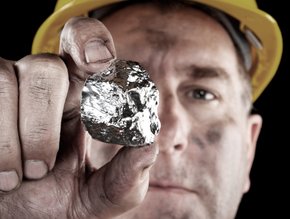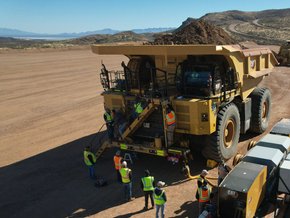New sensor to monitor vibration in mining operations

Ground vibration induced by blasting operations is considered one of the most common environmental effects of mining and drilling projects. Strong ground vibration can destroy buildings and structures, hence its prediction and minimisation are of high importance - however first vibrations need to be detected and monitored.
Vibration assessment
The Vibration Meter monitors and assesses vibrations produced by long-term activities in the field such as surface or underground mining and the creation of tailing dams and dumps. The device promises to assist the mining industry in a number of important ways. It offers a wider communications range (Up to 15 km) at a more competitive price point than existing vibration-related technologies on the market. It also helps mining engineers meet vibration regulations regarding building integrity and the vibration effects on people, The Vibration Meter uses a tri-axial MEMS accelerometer with longer battery life of up to 2 years of unattended operation.
The Vibration Meter is a wireless sensor that automates data collection for long-term, continuous vibration monitoring. Implementing the device meets vibration regulations regarding building integrity and the vibration effects on people. It measures vibrations in long-term, continuous vibration monitoring projects. The new product uses a tri-axial MEMS accelerometer with longer battery life, wider communications range and more competitive price point than existing vibration-related technologies on the market, while complying with key regulatory standards.
Expanding on Worldsensing’s existing portfolio of wireless monitoring devices, The Vibration Meter is uniquely positioned to help engineering service providers comply with regulations of building integrity such as the German standard DIN 4140-3, its British Analogue BS 7385-2 and the ISO 2631-2 regarding the effect of the vibrations on people.
Increased regulation
The product launch comes at a time when regulators are placing increased scrutiny on industries producing high-vibrational activities. To ensure safe and stable infrastructures in these industries including construction, mining, and off-highway, there’s been a shift to safeguarding both building integrity and the comfort of local communities in areas surrounding areas construction and mine sites.
The Vibration Meter features an advanced algorithm that detects threshold breaches of vibration-based parameters such as LAW/PPV and frequency. The device continuously gathers this data at 1,000 MHz on site, which is then communicated through a cellular gateway to the management tools that engineering service providers use. This taps into Worldsensing’s Long Range (LoRa) antenna - providing up to 15 km of range and making it compatible with other Worldsensing devices and already deployed networks.
Equipped with a 3,6 V D-size user-replaceable, high energy density battery, The Vibration Meter has a battery lifespan of up to two years at a 30-minute reporting period, with an event occurrence every 2 to 3 minutes. This technology has also been designed to work in all weather conditions, as it functions in -40 ⁰C to 80 ⁰C operating temperatures.
Andrea Bartoli, Chief Technology Officer at Worldsensing said: “With extreme weather events emerging across the globe, it's imperative that infrastructure in our communities maintain the structural integrity it was designed to have. Worldsensing’s vibration device is a big step towards achieving this increased protection. As a result of the heightened monitoring of vibrational events, the engineering community can also commit to protecting the environment in their journey to uplifting local communities through their development projects.”
With more than 3,000 deployed networks and 170,000 active devices worldwide, Worldsensing has enabled real-time data acquisition of geotechnical structural sensors, allowing industrial companies to connect and wirelessly monitor infrastructures in remote locations.






